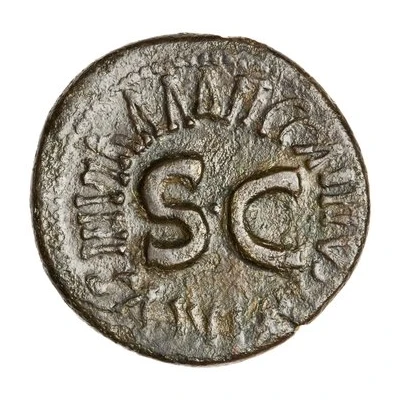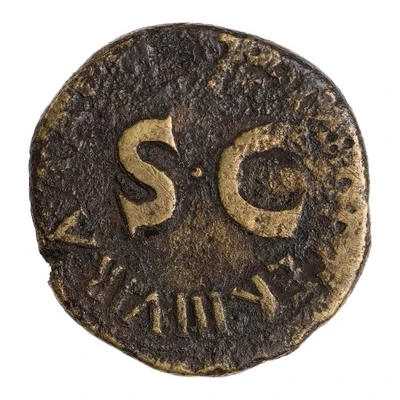


© American Numismatic Society (ANS)
Dupondius C GALLIVS C F LVPERCVS IIIVIR A A A F F S C 16 BC
16 BC year| Bronze | 10.8 g | 26.5 mm |
| Issuer | Rome › Roman Empire (27 BC - 395 AD) |
|---|---|
| Emperor | Augustus (Caius Octavius) (27 BC - 14 AD) |
| Type | Standard circulation coin |
| Year | 16 BC |
| Value | 1 Dupondius = ⅛ Denarius |
| Currency | Denarius, Reform of Augustus (27 BC – AD 215) |
| Composition | Bronze |
| Weight | 10.8 g |
| Diameter | 26.5 mm |
| Shape | Round (irregular) |
| Technique | Hammered |
| Demonetized | Yes |
| Updated | 2024-10-06 |
| Numista | N#247859 |
|---|---|
| Rarity index | 100% |
Reverse
Legend surrounding S C.
Script: Latin
Lettering:
C GALLIVS C F LVPERCVS IIIVIR A A A F F
S C
Translation:
Caius Gallus Caii Filius Lupercus Triumvir Auro, Argento, Aere, Flando, Feriundo. Senatus Consultum.
Gaius Gallus son of Gaius Lupercus, moneyer (Triumvir Monetalis) casting and striking gold, silver, and bronze coins. Decree of the senate.
Comment
Mass varies: 7.98–14.36 g;Diameter varies: 24–30.5 mm;
Source: Online Coins of the Roman Empire (OCRE)
Interesting fact
The Dupondius coin features an interesting combination of imagery and inscriptions. The obverse (front) side bears the image of a Roman Emperor, likely Augustus, while the reverse (back) side features a depiction of the Roman goddess of victory, Victoria, holding a wreath and a palm branch. The inscription "C GALLIVS C F LVPERCVS IIIVIR A A A F F S C" on the reverse side refers to the coin's minting authority and the title of the emperor. One interesting fact about this coin is that it was minted during the reign of Augustus, who ruled Rome from 27 BC to 14 AD and is considered one of the greatest emperors in Roman history. Augustus oversaw a period of relative peace and prosperity, and his reign marked the beginning of the Roman Empire's golden age. The coin's imagery and inscriptions reflect the political and cultural values of the time, making it a valuable piece of historical artifact.



